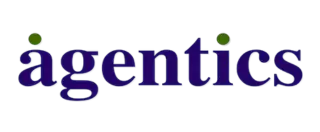
Understanding Bot Meaning in Chat: Key Concepts and Evolution
GeneralOverview
This article delves into the significance of bots in chat, emphasising their fundamental concepts, evolution, and influence on business communication. It articulates that chatbots, which can be classified into rule-based and AI-driven types, play a crucial role in enhancing customer engagement and operational efficiency.
By delivering immediate responses and adapting to user interactions, chatbots are revolutionising client interactions across various industries. The profound impact of these technologies cannot be overstated; they are not merely tools but pivotal assets that transform the landscape of customer service and engagement.
Introduction
The rapid evolution of technology has ushered in a new era of communication, where chatbots are pivotal in shaping interactions between businesses and their customers. These intelligent software applications are designed to simulate human conversation; they transcend mere tools for answering queries and have transformed the landscape of customer service and engagement. As organisations increasingly rely on these automated agents, understanding the nuances of chatbot functionality and their historical development becomes essential.
What challenges and opportunities lie ahead as businesses navigate this dynamic field of AI-driven communication? The time to explore these advancements is now.
Define Bot in Chat: Core Concepts and Functionality
A chatbot, often understood through the bot meaning in chat, is a sophisticated software application engineered to simulate human conversation through text or voice interactions. These programmes leverage natural language processing (NLP) and machine learning algorithms to comprehend inputs and generate pertinent responses. Chatbots can be categorised into two primary types:
- Rule-based bots, which follow predefined scripts.
- AI-driven bots, which adapt from interactions to provide more dynamic and personalised responses.
Hybrid conversational agents amalgamate elements from both categories, employing rule-based logic alongside AI capabilities to enhance their effectiveness. Their core functions include fostering communication, streamlining tasks, and elevating user engagement, making them indispensable tools across various business applications, particularly in service and sales environments.
The impact of automated assistants on client interaction is profound. For example, Agentics’ advanced AI conversational agents can automate up to 67% of common inquiries, enabling human support teams to focus on more complex issues. This automation not only boosts efficiency but also enhances satisfaction, as individuals receive timely responses to their queries. Moreover, Agentics’ intelligent conversational agents enhance data accuracy by guiding users through questions sequentially and extracting answers from documents, thereby streamlining processes and enriching user experience. Real-world examples, such as JetSMART, which automated over 80% of its client interactions via WhatsApp and webchat, exemplify the effectiveness of automated systems in optimising service operations. Additionally, Jotform AI Agents have proven their capability to reduce form abandonment by providing a step-by-step conversational experience, further illustrating the practical applications of virtual assistants in enhancing customer engagement.
Experts in AI communication emphasise that understanding bot meaning in chat is crucial for the effectiveness of conversational agents in modern business. As noted by Rashid Khan, ‘You all know that conversational agents are a new technology altogether. It’s like the early age of the Web. Things are still shaky yet growing at the speed of light,’ emphasising the rapid advancement of chatbot technology. By 2025, the integration of AI in conversational agents is anticipated to progress further, with innovations in generative AI and multimodal systems augmenting their abilities to deliver even more sophisticated interactions. This evolution underscores the imperative for businesses to adopt conversational agents, such as those offered by Agentics, that align with their specific requirements and objectives, ensuring optimal performance and heightened customer engagement.
Trace the Evolution of Chatbots: From Early Concepts to Modern Applications
The evolution of conversational agents began in the 1960s with the groundbreaking development of ELIZA, a programme by Joseph Weizenbaum that simulated human conversation. This early innovation set the stage for future advancements, yet it was not until the 2010s that we witnessed significant progress. The advent of machine learning and deep learning techniques ushered in a transformative era, allowing automated conversational agents to learn from user interactions and adapt their responses effectively. By 2025, the chatbot market is projected to soar to $15.5 billion, underscoring the increasing reliance on these tools across diverse sectors.
Key milestones in the evolution of chatbots highlight the bot meaning in chat, including the transition from basic rule-based systems to advanced AI-driven models capable of understanding context and sentiment. Contemporary virtual assistants, for instance, can handle complex, multi-turn discussions and are increasingly integrated into platforms such as websites, messaging applications, and support systems. This integration has revolutionised client interactions, with statistics revealing that automated assistants can resolve issues 18% faster and enhance conversion rates by 23%.
While early chatbot technologies were groundbreaking, they often faced challenges in natural language understanding, which limited their effectiveness. However, advancements in AI have led to the creation of virtual assistants that not only respond to inquiries but also assess client feedback to improve service delivery. As of 2023, 64% of enterprises trust chatbot technology for routine client service, highlighting the profound impact these tools have on enhancing user engagement and operational efficiency.
Explore Different Types of Chatbots: Features and Use Cases
Chatbots can be categorised into several types based on their functionality and application, which helps in understanding the bot meaning in chat. Rule-based conversational agents operate on predefined scripts, making them suitable for straightforward tasks such as answering frequently asked questions. These systems are often cost-effective, with development costs ranging from $5,000 to $25,000, excelling in environments where interactions are predictable. For instance, numerous companies employ rule-based virtual assistants to manage simple inquiries, allowing human agents to concentrate on more intricate matters. This effectiveness in predictable environments underscores their significance in client service operations.
In contrast, AI-driven conversational agents leverage machine learning and natural language processing to comprehend and respond to complex inquiries, making them ideal for service and sales interactions. These advanced systems can adapt to participant inputs, providing tailored responses that enhance customer engagement. Notably, statistics reveal that 41% of companies utilising AI conversational agents for sales report an average sales growth of 67%, underscoring their effectiveness in boosting revenue.
Voice-activated chatbots, frequently found in virtual assistants, enable individuals to engage through spoken commands, further broadening the scope of chatbot applications. With over 8.4 million businesses projected to use voice assistance by 2024, this trend highlights the growing importance of voice-activated solutions. Each type of chatbot serves distinct purposes across various industries, including retail, healthcare, finance, and education, significantly enhancing user experience and operational efficiency. For example, healthcare virtual assistants can save customers approximately four minutes per inquiry, thereby enhancing satisfaction and simplifying appointment bookings.
The choice between rule-based and AI-driven conversational agents ultimately hinges on the specific requirements of an organisation, which often relate to the bot meaning in chat. While rule-based automated systems are effective for simple tasks, AI-driven solutions offer greater flexibility and adaptability, making them invaluable assets in today’s dynamic commercial landscape. Furthermore, with 60% of consumers indicating that chatbots often influence their purchasing decisions, selecting the appropriate type of chatbot is crucial for achieving success.
Assess the Impact of Chatbots on Business Communication and Customer Engagement
The bot meaning in chat has revolutionised enterprise communication by enabling chatbots to deliver immediate responses to client inquiries, effectively reducing wait times and enhancing overall satisfaction. They offer 24/7 access, enabling businesses to engage with clients beyond traditional hours. Additionally, automated conversational agents can handle multiple interactions simultaneously, significantly boosting efficiency while lowering operational costs.
In sales environments, they facilitate lead generation and qualification, expertly guiding potential clients through the sales funnel. The integration of chatbots into customer service strategies not only enhances user experience but also generates valuable data insights, which clarify the bot meaning in chat and can inform future business decisions.
Embrace the power of chatbots to transform your communication strategies and drive your business forward.
Conclusion
The exploration of bot meaning in chat reveals the transformative role that chatbots play in enhancing communication and operational efficiency within businesses. These sophisticated tools, leveraging advanced technologies such as natural language processing and machine learning, have evolved significantly from their rudimentary origins to become essential components of modern customer engagement strategies.
Throughout the article, key insights were discussed, including the classification of chatbots into rule-based and AI-driven categories, each serving distinct needs across various industries. The evolution from basic conversational agents to complex AI systems capable of understanding context and sentiment illustrates the rapid advancements in this field. Real-world examples, such as JetSMART and Jotform AI Agents, underscore the tangible benefits of implementing chatbots, including increased efficiency, improved customer satisfaction, and enhanced data accuracy.
Embracing chatbot technology is not merely a trend but a strategic necessity for businesses aiming to thrive in an increasingly digital landscape. As the market for chatbots continues to expand, organisations must carefully assess their specific requirements and choose the right type of conversational agent to meet their goals. The future of communication lies in these intelligent systems, and harnessing their potential can lead to significant improvements in customer service and business performance.
Frequently Asked Questions
What is a chatbot?
A chatbot is a sophisticated software application designed to simulate human conversation through text or voice interactions, utilising natural language processing (NLP) and machine learning algorithms to understand inputs and generate relevant responses.
What are the two primary types of chatbots?
The two primary types of chatbots are rule-based bots, which follow predefined scripts, and AI-driven bots, which adapt from interactions to provide more dynamic and personalised responses.
What are hybrid conversational agents?
Hybrid conversational agents combine elements from both rule-based and AI-driven bots, using rule-based logic alongside AI capabilities to enhance their effectiveness.
What are the core functions of chatbots?
The core functions of chatbots include fostering communication, streamlining tasks, and elevating user engagement, making them essential tools in various business applications, especially in service and sales environments.
How do automated assistants impact client interaction?
Automated assistants can automate a significant percentage of common inquiries, allowing human support teams to focus on more complex issues. This boosts efficiency and enhances customer satisfaction by providing timely responses.
Can you provide an example of effective chatbot implementation?
JetSMART automated over 80% of its client interactions via WhatsApp and webchat, demonstrating the effectiveness of automated systems in optimising service operations.
How do Jotform AI Agents help with form abandonment?
Jotform AI Agents reduce form abandonment by providing a step-by-step conversational experience, which enhances customer engagement.
Why is understanding bot meaning in chat important?
Understanding bot meaning in chat is crucial for the effectiveness of conversational agents in modern business, as it helps ensure that these technologies meet specific requirements and objectives.
What is expected in the future of chatbot technology?
By 2025, the integration of AI in conversational agents is expected to advance further, with innovations in generative AI and multimodal systems enhancing their ability to deliver more sophisticated interactions.
Enjoyed this post? Share it with your network!
10 Best AI Sales Tools to Boost Your Team’s Performance

Discover the top 10 best AI sales tools to enhance team performance and drive revenue growth.
Mastering Test Call Numbers: A Step-by-Step Guide for Sales Directors

Elevate your communication with our guide on mastering test call numbers for sales success.
7 Ways Automated Outbound Calls Boost Sales Performance

Discover how automated outbound calls enhance sales performance and streamline communication.
